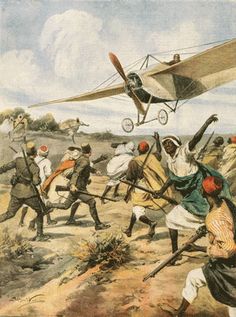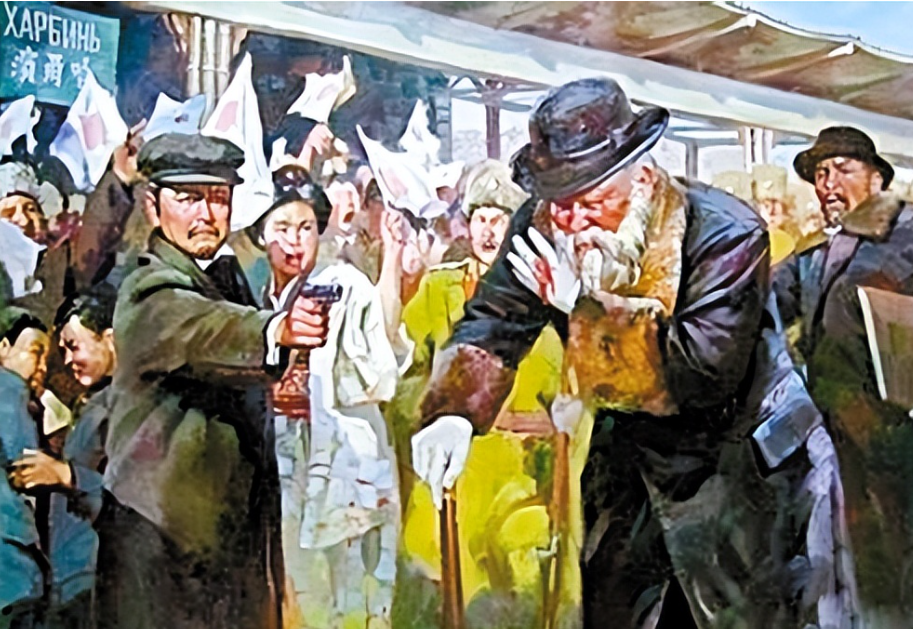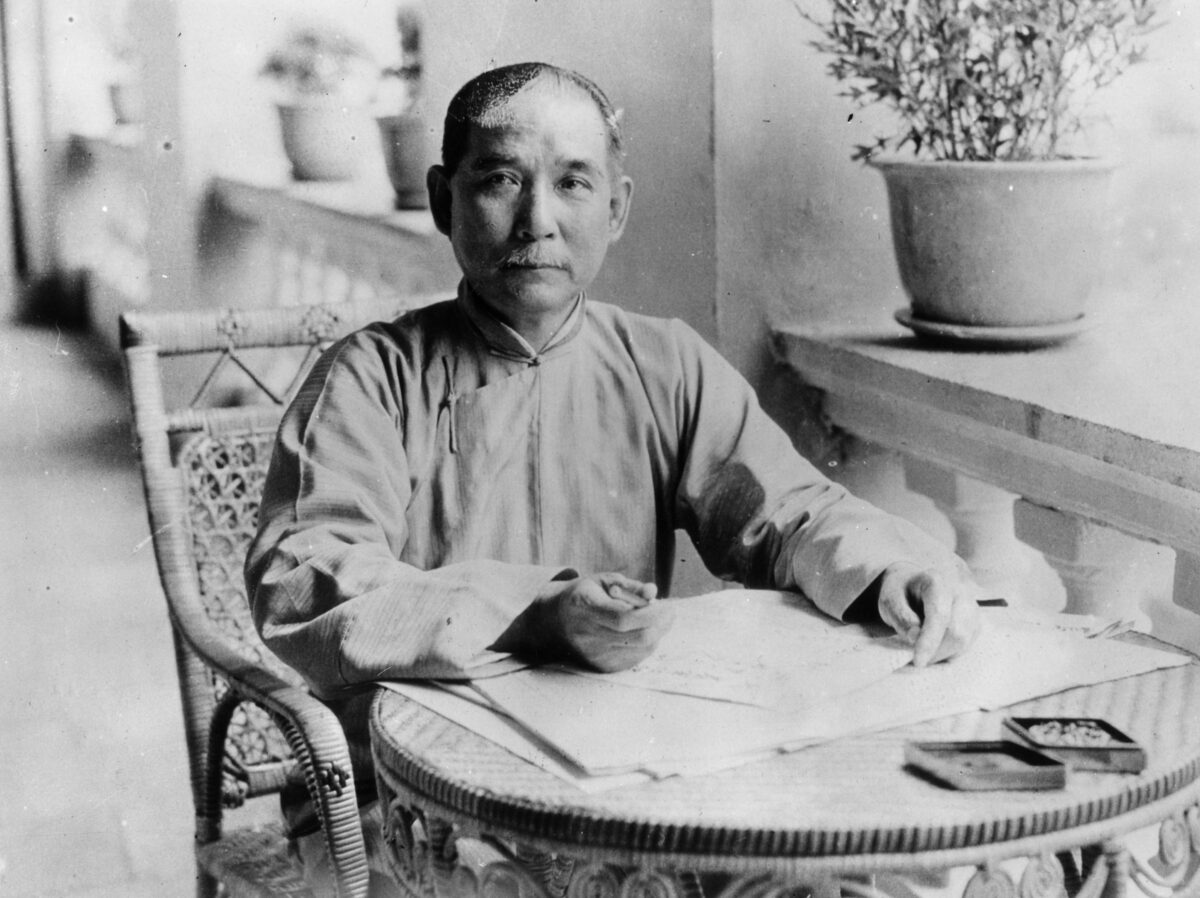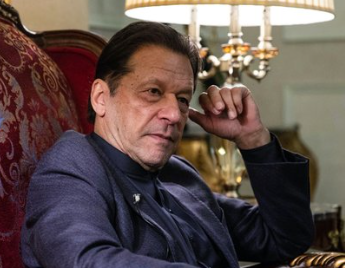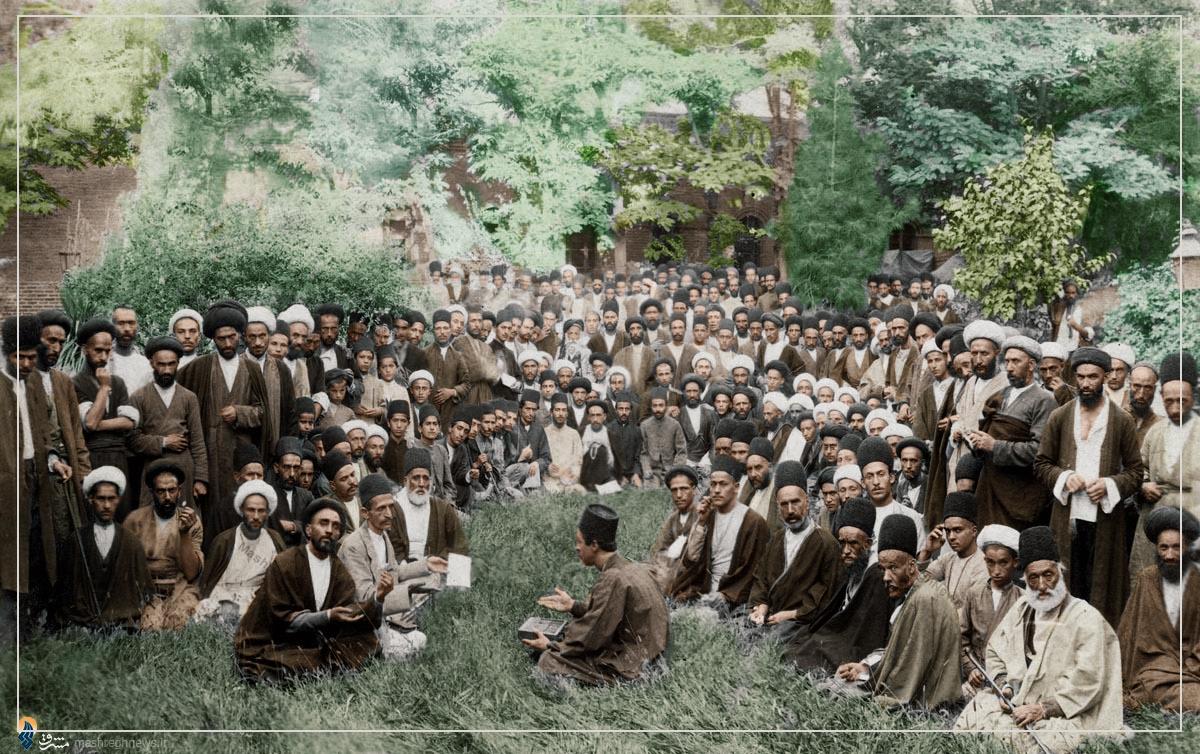After losing to Ethiopia, Italy tries to restore its reputation as a colonizer by invading Libya, following directly from France’s invasion of Morocco and leading directly to the Balkan War. The dominoes keep falling as the European colonizers keep grabbing. Libya becomes a battlefront for decades – one we will return to in future episodes.
World War Civ 19: Morocco 1911 Agadir Crisis
The short Hafiziyya period in Morocco leads to the Treaty of Fez and annexation; Morocco’s lost its sovereignty but it’s Germany that feels aggrieved. More scrambling for Africa and another inter-imperial spat to inch us closer to WW1.
AER 128: CAUKUZians speak out!
Arama Rata, independent Maori researcher, and Carl Zha of Silk & Steel podcast are both back! Carl reports on his lived experience as a survivor of the Prigozhin coup in Moscow; Arama outlines the anti-AUKUS speaking tour she is on with other journalists and activists; I continue my rant about the sheer plagiarism of Canada’s China panic using David Brophy’s book about Australia’s China panic. We conclude with the possibility of a regular meeting of CAUKUSZians (Canada + AUKUS + new Zealand)
World War Civ 18: Japan annexes Korea 1910
Japan’s annexation of Korea in 1910 is scramble-like colonial behavior; it is the beginning of a long and bold resistance by Korean patriots whose names will return; it is the occasion for studying Japanese colonialism in East Asia as well as its disputes with Russia. A short episode on Korea’s struggles from the Russo-Japanese War to the 1910 annexation.
World War Civ 17b: Yuan Shikai makes his move
The 1911 Chinese Revolution ends with Yuan Shikai in charge. He is ready to take the throne and become emperor except that he can’t sweep the foreigners away and ends up deepening the crisis. China enters the WW1 period in a state of fragmentation as the time of the warlords begins.
Are We Living Through a De-Dollarization?
De-dollarization is apparently here, “like it or not,” as a May 2023 video by the Quincy Institute for Responsible Statecraft, a peace-oriented think tank based in Washington, D.C., states. Quincy is not alone in discussing de-dollarization: political economists Radhika Desai and Michael Hudson outlined its mechanics across four shows between February and April 2023 in their fortnightly YouTube program, “Geopolitical Economy Hour.” Economist Richard Wolff provided a nine-minute explanation on this topic on the Democracy at Work channel. On the other side, media outlets like Business Insider have assured readers that dollar dominance isn’t going anywhere. Journalist Ben Norton reported on a two-hour, bipartisan Congressional hearing that took place on June 7—“Dollar Dominance: Preserving the U.S. Dollar’s Status as the Global Reserve Currency”—about defending the U.S. currency from de-dollarization. During the hearing, Congress members expressed both optimism and anxiety about the future of the dollar’s supreme role. But what has prompted this debate?
Until recently, the global economy accepted the U.S. dollar as the world’s reserve currency and the currency of international transactions. The central banks of Europe and Asia had an insatiable appetite for dollar-denominated U.S. Treasury securities, which in turn bestowed on Washington the ability to spend money and finance its debt at will. Should any country step out of line politically or militarily, Washington could sanction it, excluding it from the rest of the world’s dollar-denominated system of global trade.
But for how long? After a summit meeting in March between Russia’s President Vladimir Putin and China’s President Xi Jinping, Putin stated, “We are in favor of using the Chinese yuan for settlements between Russia and the countries of Asia, Africa, and Latin America.” Putting that statement in perspective, CNN’s Fareed Zakaria said, “The world’s second-largest economy and its largest energy exporter are together actively trying to dent the dollar’s dominance as the anchor of the international financial system.” Already, Zakaria noted, Russia and China are holding less of their central bank reserves in dollars and settling most of their trade in yuan, while other countries sanctioned by the United States are turning to “barter trade” to avoid dependence on the dollar.
A new global monetary system, or at least one in which there is no near-universal reserve currency, would amount to a reshuffling of political, economic, and military power: a geopolitical reordering not seen since the end of the Cold War or even World War II. But as a look at its origins and evolution makes clear, the notion of a standard global system of exchange is relatively recent and no hard-and-fast rules dictate how one is to be organized. Let’s take a brief tour through the tumultuous monetary history of global trade and then consider the factors that could trigger another stage in its evolution.
Imperial Commodity Money
Before the dollarization of the world economy took place, the international system had a gold standard anchored by the naval supremacy of the British Empire. But a currency system backed by gold, a mined commodity, had an inherent flaw: deflation. As long as metal mining could keep up with the pace of economic growth, the gold standard could work. But, as Karl Polanyi noted in his 1944 book, The Great Transformation, “the amount of gold available may [only] be increased by a few percent over a year… not by as many dozen within a few weeks, as might be required to carry a sudden expansion of transactions. In the absence of token money, business would have to be either curtailed or carried on at very much lower prices, thus inducing a slump and creating unemployment.”
This deflationary spiral, borne by everyone in the economy, was what former U.S. presidential candidate William Jennings Bryan described in his famous 1896 Democratic Party convention speech, in which he declared, “You shall not crucify mankind upon a cross of gold.” For the truly wealthy, of course, the gold standard was a good thing, since it protected their assets from inflation.
The alternative to the “cross of gold” was for governments to ensure that sufficient currency circulated to keep business going. For this purpose, they could produce, instead of commodity money of gold or silver, token or “fiat” money: paper currency issued at will by the state treasury. The trouble with token money, however, was that it could not circulate on foreign soil. How, then, in a global economy, would it be possible to conduct foreign trade in commodity money and domestic business in token money?
The Spanish and Portuguese empires had one solution to keep the flow of metals going: to commit genocide against the civilizations of the Americas, steal their gold and silver, and force the Indigenous peoples to work themselves to death in the mines. The Dutch and then British empires got their hands on the same gold using a number of mechanisms, including the monopolization of the slave trade through the Assiento of 1713 and the theft of Indigenous lands in the United States and Canada. Stolen silver was used to purchase valuable trade goods in China. Britain stole that silver back from China after the Opium Wars, which China had to pay immense indemnities (in silver) for losing.
Once established as the global imperial manager, the British Empire insisted on the gold standard while putting India on a silver standard. In his 2022 PhD thesis, political economist Jayanth Jose Tharappel called this scheme “bimetallic apartheid”: Britain used the silver standard to acquire Indian commodities and the gold standard to trade with European countries. India was then used as a money pump for British control of the global economy, squeezed as needed: India ran a trade surplus with the rest of the world but was meanwhile in a trade deficit with Britain, which charged its colony “Home Charges” for the privilege of being looted. Britain also collected taxes and customs revenues in its colonies and semi-colonies, simply seizing commodity money and goods, which it resold at a profit, often to the point of famine and beyond—leading to tens of millions of deaths. The system of Council Bills was another clever scheme: paper money was sold by the British Crown to merchants for gold and silver. Those merchants used the Council Bills to purchase Indian goods for resale. The Indians who ended up with the Council Bills would cash them in and get rupees (their own tax revenues) back. The upshot of all this activity was that the Britain drained $45 trillion from India between 1765 and 1938, according to research by economist Utsa Patnaik.
From Gold to Gold-Backed Currency to the Floating Dollar
As the 19th century wore on, an indirect result of Britain’s highly profitable management of its colonies—and particularly its too-easy dumping of its exports into their markets—was that it fell behind in advanced manufacturing and technology to Germany and the United States: countries into which it had poured investment wealth drained from India and China. Germany’s superior industrial prowess and Russia’s departure from Britain’s side after the Bolshevik Revolution left the British facing a possible loss to Germany in World War I, despite Britain drawing more than 1 million people from the Indian subcontinent to serve (more than 2 million Indians would serve Britain in WWII) during the war. American financiers loaned Britain so much money that if it had lost WWI, U.S. banks would have realized an immense loss. When the war was over, to Britain’s surprise, the United States insisted on being paid back. Britain squeezed Germany for reparations to repay the U.S. loans, and the world financial system broke down into “competitive devaluations, tariff wars, and international autarchy,” as Michael Hudson relates in his 1972 book, Super imperialism, setting the stage for World War II.
After that war, Washington insisted on an end to the sterling zone; the United States would no longer allow Britain to use India as its own private money pump. But John Maynard Keynes, who had written Indian Currency and Finance (1913), The Economic Consequences of the Peace (1919), and the General Theory of Employment, Interest, and Money (1936), believed he had found a new and better way to supply the commodity money needed for foreign trade and the token money required for domestic business, without crucifying anyone on a cross of gold.
At the international economic conference in 1944 at Bretton Woods, New Hampshire, Keynes proposed an international bank with a new reserve currency, the bancor, that would be used to settle trade imbalances between countries. If Mexico needed to sell oil and purchase automobiles from Germany, for instance, the two countries could carry out trade in bancors. If Mexico found itself owing more bancors than it held, or Germany had a growing surplus of them, an International Clearing Union would apply pressure to both sides: currency depreciation for debtors, but also currency appreciation and punitive interest payments for creditors. Meanwhile, the central banks of both debtor and creditor nations could follow Keynes’s domestic advice and use their powers of money creation to stimulate the domestic economy as needed, within the limits of domestically available resources and labor power.
Keynes made his proposal, but the United States had a different plan. Instead of the bancor, the dollar, backed by gold held at Fort Knox, would be the new reserve currency and the medium of world trade. Having emerged from the war with its economy intact and most of the world’s gold, the United States led the Western war on communism in all its forms using weapons ranging from coups and assassinations to development aid and finance. On the economic side, U.S. tools included reconstruction lending to Europe, development loans to the Global South, and balance of payments loans to countries in trouble (the infamous International Monetary Fund (IMF) “rescue packages”). Unlike Keynes’s proposed International Clearing Union, the IMF imposed all the penalties on the debtors and gave all the rewards to the creditors.
The dollar’s unique position gave the United States what a French minister of finance called an “exorbitant privilege.” While every other country needed to export something to obtain dollars to purchase imports, the United States could simply issue currency and proceed to go shopping for the world’s assets. Gold backing remained, but the cost of world domination became considerable even for Washington during the Vietnam War. Starting in 1965, France, followed by others, began to hold the United States at its word and exchanged U.S. dollars for U.S. gold, persisting until Washington canceled gold backing and the dollar began to float free in 1971.
The Floating Dollar and the Petrodollar
The cancellation of gold backing for the currency of international trade was possible because of the United States’ exceptional position in the world as the supreme military power: it possessed full spectrum dominance and had hundreds of military bases everywhere in the world. The U.S. was also a magnet for the world’s immigrants, a holder of the soft power of Hollywood and the American lifestyle, and the leader in technology, science, and manufacturing.
The dollar also had a more tangible backing, even after the gold tether was broken. The most important commodity on the planet was petroleum, and the United States controlled the spigot through its special relationship with the oil superpower, Saudi Arabia; a meeting in 1945 between King Abdulaziz Al Saud and then-President Franklin Delano Roosevelt on an American cruiser, the USS Quincy, on Great Bitter Lake in Egypt sealed the deal. When the oil-producing countries formed an effective cartel, the Organization of Petroleum Exporting Countries (OPEC), and began raising the price of oil, the oil-deficient countries of the Global South suffered, while the oil exporters exchanged their resources for vast amounts of dollars (“petrodollars”).
The United States forbade these dollar holders from acquiring strategic U.S. assets or industries but allowed them to plow their dollars back into the United States by purchasing U.S. weapons or U.S. Treasury securities: simply holding dollars in another form. Economists Jonathan Nitzan and Shimshon Bichler called this the “weapondollar-petrodollar” nexus in their 2002 book, The Global Political Economy of Israel. As documented in Michael Hudson’s 1977 book, Global Fracture (a sequel to Super Imperialism), the OPEC countries hoped to use their dollars to industrialize and catch up with the West, but U.S. coups and counterrevolutions maintained the global fracture and pushed the global economy into the era of neoliberalism.
The Saudi-U.S. relationship was the key to containing OPEC’s power as Saudi Arabia followed U.S. interests, increasing oil production at key moments to keep prices low. At least one author—James R. Norman, in his 2008 book, The Oil Card: Global Economic Warfare in the 21st Century—has argued that the relationship was key to other U.S. geopolitical priorities as well, including its effort to hasten the collapse of the Soviet Union in the 1980s. A 1983 U.S. Treasury study calculated that, since each $1 drop in the per barrel oil price would reduce Russia’s hard currency revenues by up to $1 billion, a drop of $20 per barrel would put it in crisis, according to Peter Schweizer’s book, Victory.
In 1985, Norman recounted in his book that Saudi Arabia “[opened] the floodgates, [slashed] its pricing, and [pumped] more oil into the market.” While other factors contributed to the collapse of the oil price as well, “Russian academic Yegor Gaidar, acting prime minister of Russia from 1991 to 1994 and a former minister of economy, has described [the drop in oil prices] as clearly the mortal blow that wrecked the teetering Soviet Union.”
From Petrodollar to De-Dollarization
When the USSR collapsed, the United States declared a new world order and launched a series of new wars, including against Iraq. The currency of the new world order was the petrodollar-weapondollar. An initial bombing and partial occupation of Iraq in 1990 was followed by more than a decade of applying a sadistic economic weapon to a much more devastating effect than it ever had on the USSR (or other targets like Cuba): comprehensive sanctions. Forget price manipulations; Iraq was not allowed to sell its oil at all, nor to purchase needed medicines or technology. Hundreds of thousands of children died as a result. Several authors, including India’s Research Unit for Political Economy in the 2003 book Behind the Invasion of Iraq and U.S. author William Clark in a 2005 book, Petrodollar Warfare, have argued that Saddam Hussein’s final overthrow was triggered by a threat to begin trading oil in euros instead of dollars. Iraq has been under U.S. occupation since.
It seems, however, that the petro-weapondollar era is now coming to an end, and at a “‘stunning’ pace.” After the Putin-Xi summit in March 2023, CNN’s Fareed Zakaria worried publicly about the status of the dollar in the face of China’s and Russia’s efforts to de-dollarize. The dollar’s problems have only grown since. All of the pillars upholding the petrodollar-weapondollar are unstable:
- The United States is no longer the dominant manufacturer and China is catching up in science and technology as well.
- The United States does not seem to be an attractive development model for Global South countries anymore and is not able to compete with China’s Belt and Road Initiative deals in Africa and other parts of the developing world.
- The United States has sanctioned so many countries (Russia, Iran, Venezuela, Cuba, and China) that they are beginning to achieve a critical mass by trading with one another.
- U.S. military power is no longer seen as supreme after its lack of success in bringing about a regime change in Syria and its withdrawal from Afghanistan.
- While the United States may have succeeded in dramatically reducing Russian gas sales to Europe by—if Seymour Hersh’s widely believed February report is eventually vindicated—blowing up Nordstream, it has been unable to convince India or China to go along with its plans in this regard: both countries are purchasing Russian energy and reselling it as well.
- After watching the United States steal Russia’s reserves and Venezuela’s gold and force the sale of Venezuela’s oil company CITGO, even U.S. allies are reluctant to hold assets in dollars or keep their assets in the United States lest they be seized. Saudi Arabia will be trading with China in yuan instead of dollars, has canceled its U.S.-backed war on Yemen, made peace with Iran, and hosted Syria’s President Bashar al-Assad at the Arab League summit in May 2023.
But what will replace the dollar?
“A globalized economy needs a single currency,” Zakaria said on CNN after the Xi-Putin summit. “The dollar is stable. You can buy and sell at any time and it’s governed largely by the market and not the whims of a government. That’s why China’s efforts to expand the yuan’s role internationally have not worked.” But the governance of the U.S. dollar by the “whims of a government”—namely, the United States—is precisely why countries are looking for alternatives.
Zakaria took comfort in the fact that the dollar’s replacement will not be the yuan. “Ironically, if Xi Jinping wanted to cause the greatest pain to America, he would liberalize his financial sector and make the yuan a true competitor to the dollar. But that would take him in the direction of markets and openness that is the opposite of his current domestic goals.” Zakaria is wrong. China need not liberalize to internationalize the yuan. When the dollar was supreme, the United States simply excluded foreign dollar-holders from purchasing U.S. companies or assets and restricted them to holding U.S. Treasury securities instead.
But as Chinese economist Yuanzheng Cao, former chief economist of the Bank of China, argued in his 2018 book, Strategies for Internationalizing the Renminbi (the official name of the currency whose unit is the yuan), Beijing can internationalize the yuan without attempting to replace the dollar and incurring the widespread resentment that would follow. It only needs to secure the yuan’s use strategically as one of several currencies and in a wider variety of transactions, such as currency swaps.
Elsewhere, Keynes’s postwar idea for a global reserve currency is being revived on a more limited basis. A regional version of the bancor, the sur, was proposed by Brazil’s President Luis Inácio (“Lula”) da Silva. Ecuadorian economist and former presidential candidate Andrés Arauz described the sur as follows in a February interview: “The idea is not to replace each country’s national, sovereign currency, but rather to have an additional currency, a complementary currency, a supranational currency for trade among countries in the region, starting with Brazil and Argentina, which are the sort of two powerhouses in the Southern Cone, and that could then amplify to the rest of the region.” Lula followed up the sur idea with an idea of a BRICS currency; Russian economist Sergey Glazyev proposes a kind of bancor backed by a basket of commodities.
Currency systems reflect power relations in the world: they don’t change them. The Anglo gold standard and the American dollar standard reflected imperial monopoly power for centuries. In a multipolar world, however, we should expect more diverse arrangements.
This article was produced by Globetrotter.
In Real Time with Stan Cox 12: India dilemmas and how tech won’t save us
Stan Cox is back to talk about two essays. One, co-written with Priti Gulati Cox, “Between a Yoga Mat and a Hard Place”, about where India is headed. And another, “The Old Future is Gone and Technology Won’t Bring it Back”, by Stan himself. Justin goes on a mini-rant against doomerism at the end, and we talk about how next episode will be a bit of a KSR book club.
World War Civ 17a: The 1911 Chinese Revolution pt1
The Qing dynasty desperately tries a reform to stay in power while secret societies plot against them; intellectuals debate how to modernize China while Western imperialists keep pressuring China after crushing the Boxer Rebellion. Sun Yat Sen leads a movement for a republic and a revolutionary moment sparks in 1911. Part 1 of 2.
AER 127: Has Imran Khan lost the battle with Pakistan’s Army?
On May 9 2023 ousted president Imran Khan was detained by the Pakistan army, who were forced immediately to release him. But in the month since, the crackdown on protesters (and their families) has been so widespread, reaching 10,000 arrests, that Imran Khan’s movement appears exhausted. The repression may have worked, but how long can the army rule like this? Waqas Ahmed returns for an update on Pakistan.
WWCiv 16: Persia and Portugal get constitutions, 1909 and 1910
Timeline of the constitutional revolutions that took place in Persia from 1905-1909 and Portugal in 1910. They weren’t social revolutions but shared important patterns for later events including a long nonviolent sit-in in Persia and a missed communication in Portugal (leading to a suicide!)

